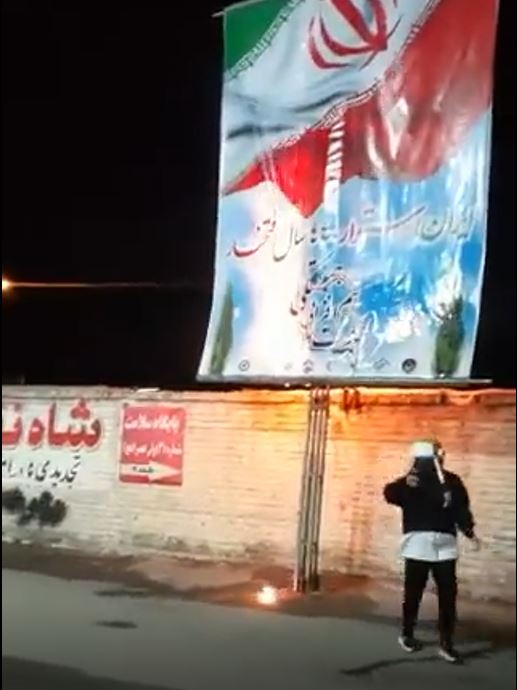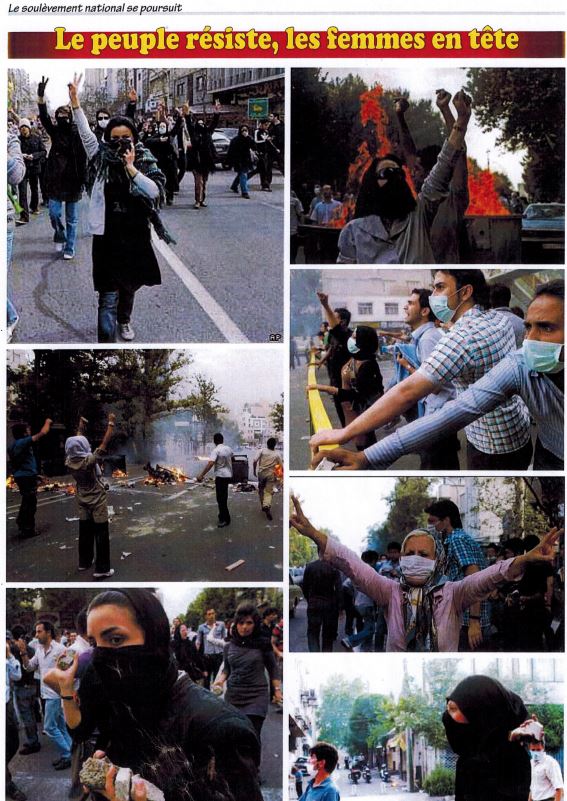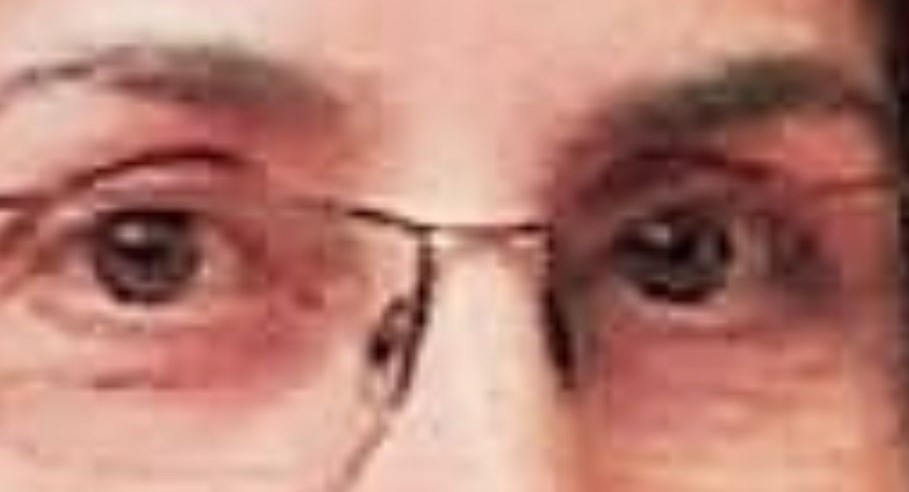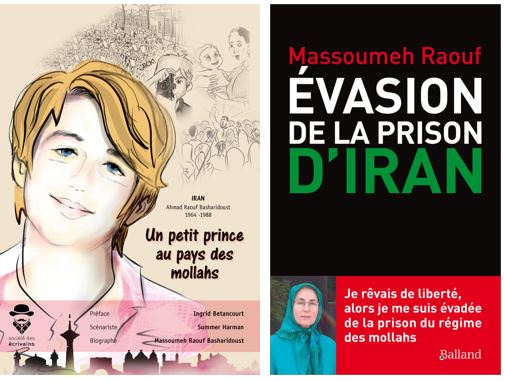“Iranian Women, Life, Freedom”
59- 27/02/2023 At the beginning of the year 2023, the news about empowerment is still dominated by the struggle of Iranian women against Iranian state discrimination and violence. To understand this protest movement and its deep roots, selfpower community approached Massoumeh Raouf. A committed journalist and author in exile in France, she shares her vision of the fight against oppression.
Mahsa Amini’, 22 died on 16 September 2022, following her arrest in Tehran by the morality police for the inappropriate wearing of her hijab. This drama is the starting point and symbol of a popular rebellion “Woman, Life, Freedom” against the Islamic Republic of Iran. Six months after the first demonstrations, how is this movement evolving?
Over the past six months, the world has witnessed a widespread popular uprising led by women in Iran, demanding freedom and democracy. The regime tried to stifle the movement by using the utmost violence. Some 750 protesters have been killed, including at least 70 children and young minors, and 4 young people aged 20-22 have been executed, and many others are sentenced to death. There have been more than 30,000 arrests and the prisons are overcrowded. Despite these repressions, the Iranian people maintain their demands. They want to overthrow this regime and mark their opposition to any form of dictatorship in Iran through their national slogan “Death to the oppressor, whether Shah or Mullahs.”

After six months of tireless and incessant battle, the people’s determination is stronger, their morale full of resistance and perseverance. Women are at the forefront of this revolution. They resist in the prisons, and upon their release, their testimonies are broadcast on social media due to the lack of access to free media – in Iran, all media are controlled by the regime, and when a journalist dares to publish critical information, he or she is arrested, imprisoned, and tortured. As a result, opponents deceive.
“Resistance units” of the Iranian People’s Mujahideen Organization (PMOI) operate secretly. They lead popular protest actions such as the destruction of regime symbols. During these gatherings, militants shout hostile slogans such as “Death to Khamenei, the supreme leader of the regime,” they spray them on walls, print them on leaflets. Information about the regime’s brutalities is relayed on the internet…. The courage of these units, mainly composed of young Iranians, girls and boys, dazzles the eyes of the whole world and gives nightmares to the regime..
Fear has changed sides! People no longer fear the regime, they no longer want to submit to its rules, they want to overthrow it to establish a free and democratic Iran.
Does this movement only defend women’s freedom, or is it also social, global?
This democratic revolution takes root in Iran’s contemporary history, in the 44 years of struggle against fundamentalism under the name of Islam, and for which more than 120,000 heroes of freedom, including my little brother [1], sacrificed their lives.
During the 80s, known as the years of blood, 30,000 political prisoners were massacred in a few months (1988) on Khamenei’s orders. In 2009, a new popular revolt against rigged elections was also bloodily repressed. Since the 2017 uprising against corruption and the deterioration of the country’s economic situation following international sanctions, several major scandals [2] have sparked explosive social anger against the regime. I will mention the massacre of at least 1,500 protesters Against high cost of living in November 2019. The regime’s lies and incompetence during the coronavirus pandemic. When Khamenei banned vaccination and his decision resulted in the death of 550,000 people, including my elder brother Mahmoud.

To come back to the role of women, already in 1988, among the arrested Iranians, an overwhelming majority belonged to the People’s Mujahedin of Iran (PMOI) organization. Muslims and democrats, they were viscerally opposed to Islamist fundamentalism and all the constraints imposed on women. Since then, Iranian women have considered it their duty to overthrow this tyranny. That is why they are at the forefront of the resistance. They are also the majority in the National Council of Resistance of Iran (CNRI), the Iranian parliament in exile [3]. And it is a woman, Maryam Radjavi who is at its head.
To prevent any attempt to join the NCRI or protest, the Supreme Leader governs through terror. He appointed Ebrahim Raisi, the executioner of the massacre of 30,000 political prisoners in 1988, as the regime’s president in June 2021.
There are also economic problems. Over the last decade, Iranian growth has been zero, the investment rate is negative, and the national currency, the rial, continues to lose value. In the last five years, the country’s poor population has tripled. Up to 80% live below the poverty line. Inflation is endemic, with the price of basic necessities increasing by over 100%. Unemployment is rampant. Systematic corruption plagues the country. Discrimination against women, ethnic and religious minorities intensifies day by day.
Do you think that the global dimension of this uprising can bend the government?
The global dimensions of this movement have made Western countries hesitate in their policy of appeasement towards the regime. Unfortunately, their positions and actions remain very timid. Faced with this power-hungry government that respects no law, determination is needed. The pressure from Western countries and the rupture of relations with the regime can lead to its weakening and overthrow. Continuing to engage with the regime is providing it with artificial respiration so that it can continue its abuses.
Do you feel that this movement prolongs and gives momentum to your personal commitment?
I have been fighting for the overthrow of this regime and a free and democratic Iran for years. I want all the criminals who have killed thousands of young Iranians, including my brother and my best friends and comrades, to be tried and punished. I believe that we still do not know enough about the extent of this regime’s crimes. Confessions sometimes published by certain regime leaders chill me to the bone.

You suffered from the repression of the regime in 1981. Sentenced to 20 years in prison, you had the courage to flee prison after 8 months. Once in France, you testified about the mullahs’ abuses. Do you feel that you have made individual empowerment* yours?
I think so. Because despite all the obstacles, problems, and suffering that I have endured, I have continued my fight against this oppressive and barbaric regime. An example of individual empowerment for me is writing and publishing my books in French. French is not my native language. I learned it in exile. I never imagined that one day I could write a book in French and become a member of the famous French writers’ association, the Society of Men of Letters (SGDL).
To better understand these recent events, I tell the story of Iran through my history and experience. But these stories are only a small part
“I was arrested in September 1981 on the street. They suspected me of being a sympathizer of the People’s Mujahedin of Iran. At that time, this mere suspicion was enough for one to be arrested, tortured, and executed. These criminals knew no limits. Khomeini, the supreme leader of the regime, had given them carte blanche. My so-called “trial” lasted only ten minutes and the whole thing was wrapped up in no time by a single mullah, called the “Sharia judge.” Without any right to defense, I was sentenced to 20 years in prison. I was 20 years old. But after 8 months, with the help of my fellow cellmates, I managed to escape. When the Pasdaran realized my escape, all the girls in the cell were tortured and transferred to various prisons. Many of them were executed in the 1988 massacre; I pay tribute to them in my book. The regime also took revenge on my family: my mother, who had cancer, was arrested and due to a lack of medical treatment, she died shortly after her release.
The trials I went through could have destroyed me. I managed to overcome them because I am not alone, because I belong to the Iranian resistance movement. Today, I am more determined than ever to fight for a free and democratic Iran.
By affirming your voice and spreading it widely, do you feel like you have become a leader?
I do what is in my power for the great cause of the People’s Mujahedin of Iran. I see myself as an activist. For years I worked as a journalist, as part of a team, and I believe in collective power. I do not see myself as a leader, as it is a cultural position. As women of the Iranian resistance, we have a charismatic leader, Maryam Rajavi, who is our national symbol of resistance. It is her place to be in the spotlight, and our place is beside her in sisterhood..
“As an Iranian in France, how do you experience the debate on the veil and burkini in our country?
I prefer not to enter this debate. What matters is above all humanity. Before being women, women are human beings, equal to men. Why are clothes for men not controversial while when it comes to women, everyone wants to impose their opinion?
How can France, how can each and every one of us support the struggle for women’s rights in Iran?
What we – Iranians – expect from France and the free world:
- Convince their governments to cut their relations with the mullahs. The mullahs are more than ever profiting from Europe’s passivity.
• Europe must announce that it recognizes the struggle of the Iranian people for a change of regime.
• European countries must close the embassies of the regime, which are centers of spying and terrorism of the mullahs; in order to show their support for the Iranian people.
• Another decisive action, which is the responsibility of the European Union in general and France in particular, is to include the Revolutionary Guards of the regime on the list of terrorist entities. The Pasdaran Corps is the most loyal force and the main pillar of the regime’s survival.
In a democratic country like France, each and every one of you has the power to support the Iranian people, to organize conferences, to participate in them, to support and transmit the demands of the Iranian resistance to political leaders, journalists, and influencers.”
Maie-Georges Fayn
[1] My younger brother Ahmad was 16 years old at the time. He was arrested before my escape but was still accused of complicity. He had been interrogated and tortured again. He was executed in 1988 along with 30,000 other Mujahideen prisoners of Iran on Khomeini’s orders and fatwa. To pay tribute to my brother Ahmad, I published in 2018 the comic book “A Little Prince in the Land of Mullahs”.
[2] The Ukrainian plane was shot down by an Iranian missile, an error that the Iranian government took three days to acknowledge, to the great dismay of the population.
[3] According to the program of the NCRI, after the overthrow of this regime, a provisional government will take charge of the administration of affairs and will last for a maximum of six months. During this period, free elections will lead to the election of a constituent and legislative assembly which will work on drafting the Constitution of the new republic.
*in the sense of regaining control over its existence and life choices
NDLR The street action visuals were taken from online videos on social media, and the other visuals were provided by ©Massoumeh Raouf.
